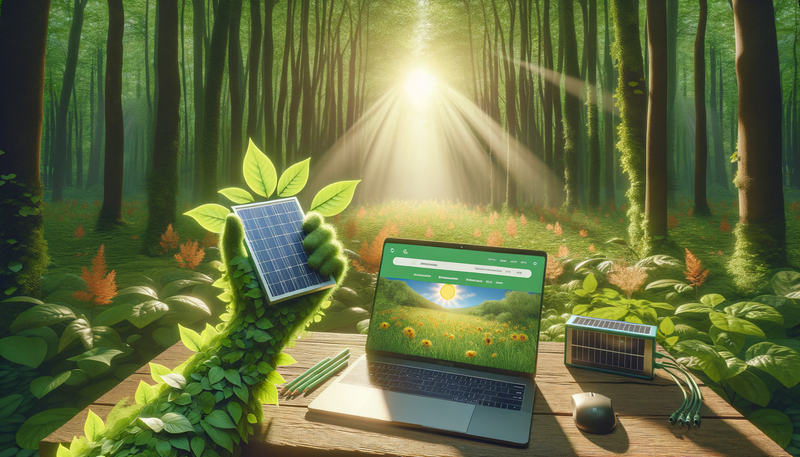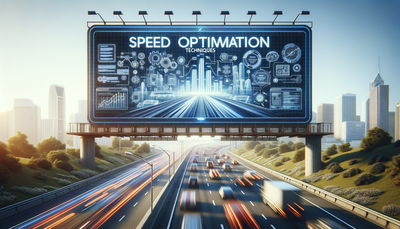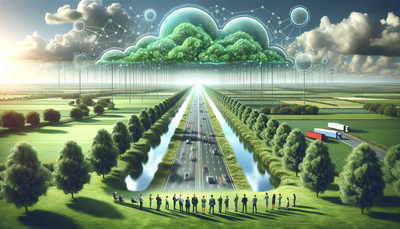The Environmental Impact of Website Maintenance: Green Practices
As the digital landscape continues to expand, the environmental impact of website maintenance has become an increasingly important consideration. This article delves into the eco-friendly practices that can be implemented to reduce the carbon footprint of websites. From energy-efficient hosting solutions to optimizing for lower power consumption and making sustainable design choices, we'll explore various strategies that webmasters and businesses can adopt to create and maintain greener websites. By understanding the environmental implications of website maintenance and implementing these green practices, we can contribute to a more sustainable digital future while still delivering high-quality online experiences.Table of Contents:

The Hidden Environmental Cost of Websites
While websites may seem intangible, they have a very real impact on the environment. Every time a website is accessed, it requires energy to power servers, data centers, and the devices used to view it. The global IT industry is responsible for approximately 2% of worldwide carbon emissions, comparable to the aviation industry.As the number of websites and internet users continues to grow, so does the energy consumption and carbon footprint associated with maintaining and accessing these digital platforms. This makes it crucial for website owners and developers to consider the environmental implications of their online presence and take steps to minimize their impact.
Do you need a website? Want to build a website but don't know where to start? Our website builder is the perfect solution. Easy to use, and with the ability to customize to fit your business needs, you can have a professional website in no time.
Energy-Efficient Hosting Solutions
One of the most significant ways to reduce a website's environmental impact is by choosing an energy-efficient hosting provider. Look for hosting companies that use renewable energy sources, such as wind or solar power, to run their data centers. Some providers even offer carbon-neutral hosting options, offsetting their emissions through various environmental initiatives.Additionally, consider using cloud hosting services, which can be more energy-efficient than traditional dedicated servers. Cloud hosting allows for better resource allocation and utilization, potentially reducing overall energy consumption. When selecting a hosting provider, inquire about their sustainability practices and choose one that aligns with your environmental goals.
Optimizing for Lower Power Consumption
Optimizing your website for lower power consumption not only reduces its environmental impact but also improves user experience. Start by minimizing the use of large media files, such as high-resolution images and videos. Compress images without sacrificing quality and use lazy loading techniques to load content only when needed.Implement efficient coding practices to reduce server load and processing time. This includes minifying CSS, JavaScript, and HTML files, as well as leveraging browser caching to store commonly used resources locally on users' devices. By reducing the amount of data transferred and processed, you can significantly lower the energy required to serve and render your website.
Building a website with SITE123 is easy
Sustainable Design Choices
Incorporating sustainable design principles into your website can have a lasting positive impact on its environmental footprint. Opt for a minimalist design approach that focuses on essential content and functionality. This not only reduces the amount of data transferred but also simplifies maintenance and updates.Choose web-safe fonts and limit the use of custom fonts, as they require additional resources to load. Implement a responsive design that adapts to different screen sizes, eliminating the need for separate mobile versions and reducing overall data usage. Consider using a dark mode option, which can save energy on devices with OLED screens.
Regular Maintenance and Optimization
Consistent website maintenance is key to ensuring optimal performance and energy efficiency. Regularly update your content management system, plugins, and themes to benefit from the latest optimizations and security patches. Remove any unnecessary plugins or features that may be slowing down your site or consuming extra resources.Conduct periodic audits of your website's performance using tools like Google PageSpeed Insights or GTmetrix. These tools can help identify areas for improvement in terms of loading speed and resource usage. By keeping your website lean and optimized, you can reduce its energy consumption and environmental impact over time.
Green Content Delivery Networks (CDNs)
Implementing a Content Delivery Network (CDN) can significantly reduce the energy required to serve your website to users across different geographical locations. CDNs distribute your website's content across multiple servers worldwide, allowing users to access data from the nearest server. This reduces the distance data needs to travel, lowering energy consumption and improving loading speeds.When choosing a CDN provider, look for those that prioritize sustainability and use renewable energy sources for their server infrastructure. Some CDN providers offer carbon-neutral or low-carbon options, helping you further reduce your website's environmental impact while improving its global performance.





